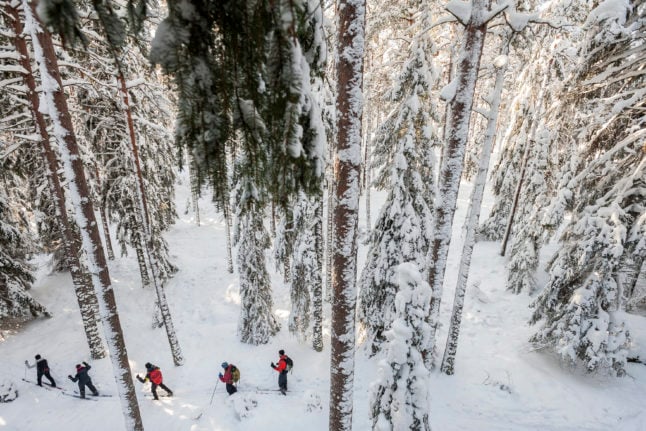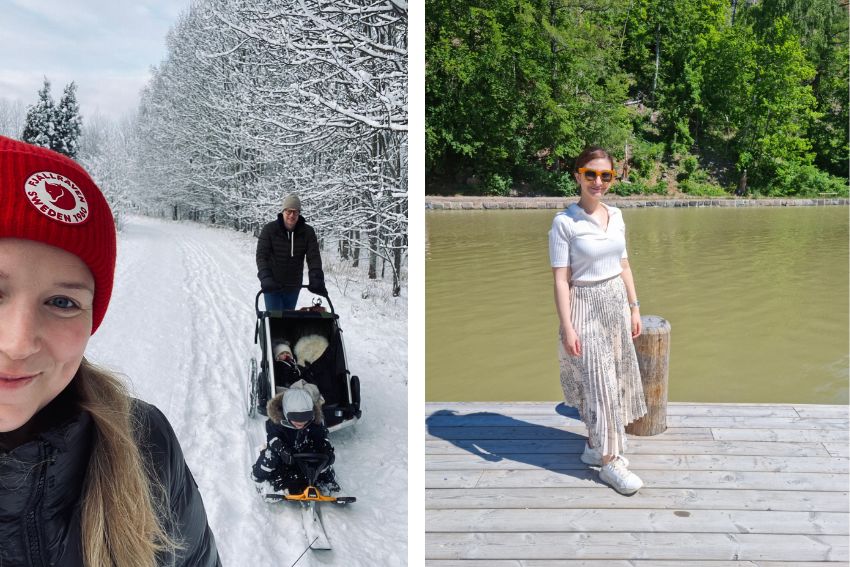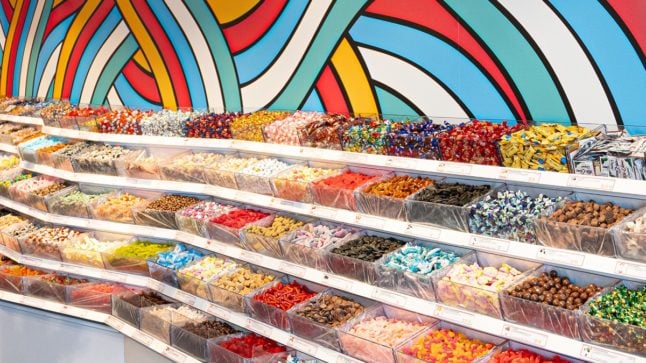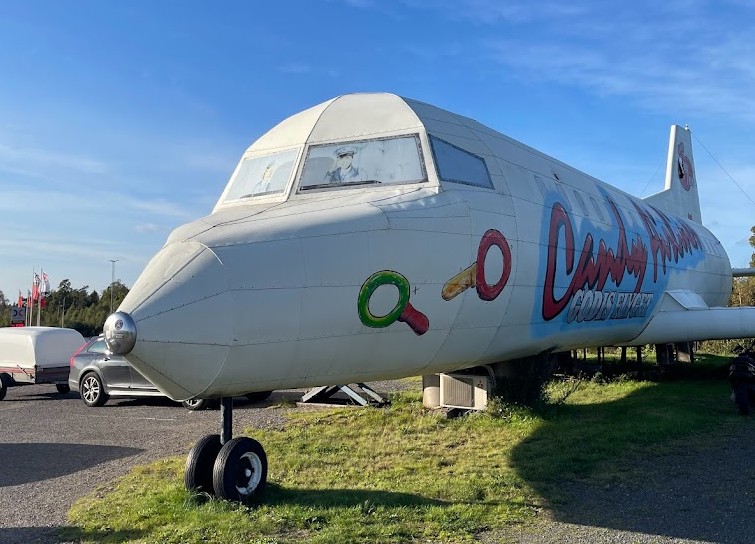Östergötland, or East Sweden, is flanked by the Baltic Sea on one side, and impressive Lake Vättern on the other. It’s home to cities, including Linköping and Norrköping, and a number of vibrant towns. The region has a reputation for being a haven of innovation and industry and is well connected, with two airports and short connection time via train to Stockholm – just 1.5 hours from Norrköping and about two hours from Linköping.
A population of 467,000 people already call this beautiful pocket of Sweden home, and more and more people are moving here. They are drawn to its work-life balance, study opportunities, exciting tech careers and affordable living, where nature and city life are both on the doorstep.
We spoke to two of Östergötland’s residents – Anna Österlund, a nature-lover who grew up in the region, and Colombian-born Hela Galvis who has lived and studied in Sweden for five years – and also got some help from East Sweden to round up seven wonders that make Östergötland so special.
Discover more about the inspiring region of Östergötland
1. Cool industrial landscapes
Östergötland has creativity and industrial innovation built into its DNA it seems. Nicknamed Sweden’s Manchester for its industrial heritage and vibe, Norrköping is a medium-sized city about 135 kilometres south of Stockholm. The city is home to former textile warehouses and paper mills from the Industrial Revolution era, which are well-preserved and located on the waterfront in the city centre.
The historic buildings and waterways, with their dams and waterfalls, are accessed via bridges and paths and make for a unique landscape.
Both Hela and Anna highlight Industrilandskapet (The Industrial Landscape) of Norrköping and its evolution today. “Now these closed textile factories are pulsating restaurants, museums, homes, apartments, co-working office spaces, walking routes – the area’s really come to life … it’s absolutely one of the coolest things to see here,” says Anna.
“There are beautiful canals to walk around in both Norrköping and Linköping,” says Hela.
Another transformation of a former industrial area is underway in Östergötland in the birthplace of the Göta Kanal, Motala. Known as the ‘cradle of industry in Sweden’, the area of the old Motala Verkstad is about to change, starting with the exciting, newly renovated Lokverkstan, an event area bringing unique life, action and concerts to this historic waterfront.
2. An impressive man-made feat: Göta Kanal
Speaking of Göta Kanal, this local wonder is an engineering marvel. Constructed in the early 19th century, the canal and its 58 locks runs for an incredible 190 kilometres and links to waterways that reach from Söderköping in Östergötland to Gothenburg on Sweden’s west coast.
From ice skating in the winter to swimming in the summer, and from cycling beside it to boating along it, there are a number of ways and places to enjoy the canal.
One of Anna’s weekend activities, after a fika with friends and her children, is a walk by the canal. “You can’t help but to be amazed by the engineering, and that’s from 200 years ago when they built it, and it’s still up and running,” she says.
3. A growth region with career opportunities
East Sweden can be described as a hub of ICT, tech and innovation with international cutting-edge expertise. Its strength in these fields comes from the mix of high-end research, industrial companies and exciting smaller start-ups.
There are an impressive 45,000 businesses in the region including several big international companies that operate from here, like Toyota Material Handling, Siemens Energy, Ericsson, Saab and Väderstad. And there are more than 170,000 jobs in a range of different industries waiting to be snapped up.
Logistics and transport is a major employer – the region has a strong infrastructure and a good logistical location. The forward-thinking nature of the region means there is an emphasis on the logistics of the future, centring on efficiency and sustainability.
For students, Linköping University is one of the largest in Sweden, with more than 32,000 students and an array of course opportunities with its 120 degree programmes.
And work opportunities don’t only centre around Östergötland’s main cities, Linköping and Norrköping. Other areas in the region are also home to companies and have a history of industry still thriving today, for example, steel in Boxhom, aluminium in Finspång, and in Mjölby, the headquarters of Toyota Material Handling.
Learn about the exciting possibilities of a tech career in East Sweden
4. The great outdoors
We can’t talk about Östergötland without mentioning its natural attractions. The Östgötaskärgården, Archipelago of Östergötland, lies off the east coast in the Baltic Sea. Made up of St. Anna, Arkösund, and the Gryt and Tjust archipelagos, it features seaside villages, lighthouses, harbours, beaches, stunning rocky outcrops and pockets of green isles – perfect for weekend boating, fishing, camping and kayaking adventures.
On the other side of Östergötland, is the beautiful – and huge – Lake Vättern, its eastern shores forming Östergötland’s border. On the waterfront here at medieval, cobblestoned Vadstena is where St Birgitta of Sweden established her convent and order.
St Birgitta’s Trail is a pilgrimage route that finishes in Vadstena and traverses breathtaking Östergötland scenery, winding through verdant meadows and mystical forest for 145 kilometres to Söderköping.
The equally fantastic Östgötaleden takes hikers on 1500 kilometres of trails through all 13 of the region’s municipalities. So no matter where you are in the region, you can easily access and walk a marked nature trail.
It’s this closeness to nature that both Anna and Hela enjoy about living in the region. Marked, family-friendly walking trails, exploring lush countryside and visiting pretty lakeside spots for outdoor fika are some of the activities that fill their weekends.
“It’s a place for soft adventure,” says Anna. “There are accessible hiking trails throughout the region. It makes it really easy for us as a family, even with strollers, to get out into the woods. And even by the ocean we have really nice hiking.”
5. Cities worth talking about
Norrköping and Linköping are exciting cities with nightlife, charming shopping quarters like Knäppingsborg in Norrköping, and restaurants serving up incredible local produce (which can actually be found throughout the entire region!).
“In Norrköping there is this kind of small explosion of culture happening,” says Hela. “You can randomly run into a concert, or a new design store that has popped up.”
There are also plenty of museums, like Linköping’s Friluftsmuseet, to entertain the kids for days, and Norrköping Art Museum for modernist lovers.
Norrköping hosts annual cultural events year-round, like the three-day Kulturnatten, the summer street party Augustifesten, and the light art festival from November to January, Norrköping Light Festival.
“The cities in East Sweden are pretty much like any other capital city where things are available,” says Hela, adding that the difference is the less hectic pace of life.
Anna agrees, “I may love the countryside, but I don’t think I’ll ever want to live far away from a city … I want to always have the possibility to go to a nice restaurant or a decent theatre show and I can get everything that I want from Östergötland.”
6. Small town appeal
It’s not only the bigger cities of Östergötland that are wonders of the region; its towns are lively hubs too.
For example, culture lovers will enjoy Vadstena, a historical town with an interesting calendar that includes annual summer operas and Shakespearean dramas.
While charming Söderköping is the launching point to exploring the St. Anna archipelago and has a postcard-worthy medieval town centre, ice cream shops dotted along the Göta Kanal and a host of family-friendly events and markets throughout the year.
7. A place of innovation
The region breeds creativity, innovation and growth. It’s home to a broad array of innovation hotspots, including its two impressive science parks: Linköping Science Park and Norrköping Science Park. Here, research, education and entrepreneurship collide, giving birth to exciting collaborations and innovation.
Advanced materials like solar cells on a roll, energy-storing paper and artificial skin are being developed in this high-tech region, where fascinating research and development is taking place and a business cluster for new materials is forming.
It’s a place lauded for its innovative healthcare, too, thanks to the high-quality, advanced medical care throughout the region, and the open research climate of the nationally and internationally recognised University Hospital in Linköping.
As with much of Sweden, there is also a focus on the environment. The breadth of sectors in Östergötland – from companies to universities to public institutions – are working toward smart solutions, the circular economy and green resource efficiency.
“Here people work in this high-tech environment where there is in-depth knowledge and thinking but it is also very calm and there is respect for nature and people really don’t want to rush,” says Hela, who praises the calmer and more respectful work-life balance she has felt since moving to Norrköping. “If you’re into that, this is your place to be!”
Dreaming of a change to the good life? Find out about life in East Sweden








 Please whitelist us to continue reading.
Please whitelist us to continue reading.
Member comments